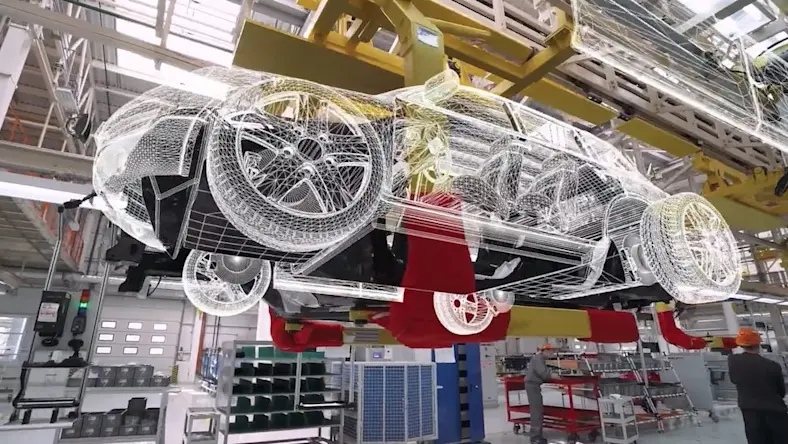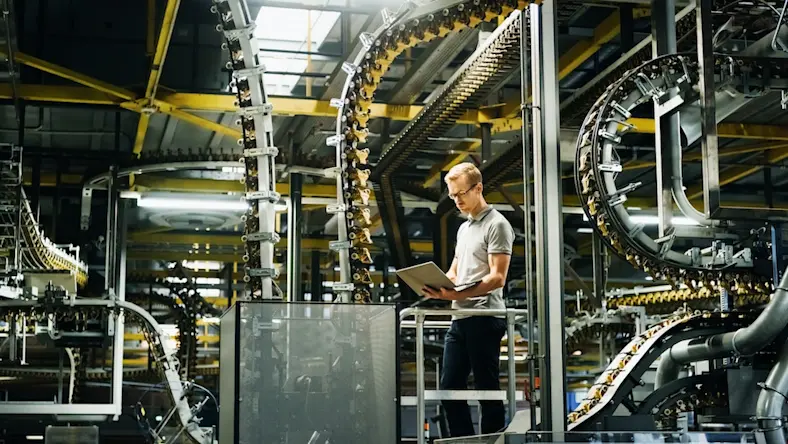& Construction

Integrated BIM tools, including Revit, AutoCAD, and Civil 3D
& Manufacturing

Professional CAD/CAM tools built on Inventor and AutoCAD
Artificial intelligence, or AI, is working its way into everyday life—from smart assistants like Siri and Alexa to personal robotics and automotive automation to emerging advances in health care. But there is still a perception issue, as people struggle to understand the technology and fear its downsides: safety concerns, replacing jobs, or even a sense of depersonalization.
As AI becomes more prevalent, so does the reluctance to hand over tasks to the technology—especially in more traditional industries like design and manufacturing (D&M). Yet AI’s potential has barely been tapped. According to projections from the World Economic Forum (PDF, p. 3), it might generate as much as $13 trillion in global economic activity and increase global GDP by 2%. For companies, choosing to use AI-powered tools can raise concerns, particularly over data sharing and security. But as companies see real benefits from using AI without risks to their data or special expertise, trust in AI will grow.
AI might seem like a recent phenomenon, but it has deep roots in manufacturing. “I started my AI career in 3D vision guided robotics automation systems for General Motors production plant 40 years ago,” says Dr. Jay Lee, a pioneer in industrial AI and the Clark Distinguished Chair Professor and the Director of the Center for Industrial Artificial Intelligence in the Mechanical Engineering Department at the University of Maryland College Park. “If people tell you AI is just beginning, no, we made it work 40 years ago. Robots assembled cars using a smart vision to automatically identify and adjust path with compensation by itself,” adds Lee, who is also a member of the World Economic Forum’s Global Future Council on Advanced Manufacturing and Production.
Companies have long sought out Dr. Lee to help improve their operations. When the compressed air system at Toyota’s Georgetown, KY, plant kept breaking down, the unplanned stoppages cost money and delayed production in that facility where a new car typically rolled off the line every 25 seconds. Lee incorporated AI into the production line using sensors and AI to detect anomalies and avoid a crash. Maintenance costs dropped 50%, and this problem has caused zero downtime since implementing the solution in 2006.
Manufacturing produces about 1,812 petabytes of data annually, and turning that data into insights and action can propel innovation if manufacturers let it. But, according to Deloitte, 67% of executives are uncomfortable supplying their data with other organizations.
“If you don’t build data to do a particular thing, it probably can’t be used for that new purpose without being reworked,” says Alec Shuldiner, the director of Data Acquisition and Strategy for Autodesk. “Data acquisition is the work needed to repurpose data so it can be used to power some new process, for example, for an analytics or machine-learning application.”
AI is only as good as the data it receives. It will only produce the desired results if that data is reliable, accurate, and relevant. “If you give me junk data, I cannot help,” Lee says. “You’ve got to give me data that is useful and usable. You have to have the right context so the data can connect to the purpose you want to do. For example, I want to predict machine failure. Well, you’ve got to give me data related to the machine’s condition. If you have a fish, it is useful, but if the fish came from polluted water, it’s not edible.”
To bridge the gap between lingering reluctance to embrace AI and maximizing its full power, manufacturers must learn to trust what they cannot see. They’re comfortable letting AI handle predictive maintenance, but generative AI is the great unknown. But it is a risk worth taking. As manufacturers better understand how AI enables end-to-end visibility, it will create more possibilities for their organizations.
Dr. Lee frames the benefits of AI as the “Three Ws”: work reduction, waste reduction, and worry reduction. “We have a lot of things we don’t know,” he says. “For example, some people walk around the factory, they want to check everything. Why? They worry, even if a machine never goes down.” AI alleviates those fears by enabling greater visibility. “If in a community, everyone has a surveillance camera, you don’t worry. You can have apps to see your home. Oh, who’s there? Oh, the Amazon delivery.” As AI proves itself and people gain greater awareness of how it works, they begin to incorporate it more into their operations.
As cloud-connected factories become the norm, AI can be supercharged, collecting all this data in real time and rapidly generating insights. But until then, manufacturers are mired in decision-making.
“In design today, we are often forced to make trade-offs that we would rather not have to make,” Dr. Shuldiner says. “You can design something quickly or design it to be easily manufacturable or design it to achieve some sustainability goal, like recyclability. But often you can’t do all of those things at once. So, if you want to add recyclability to the design, then you have to spend a lot more time on that design, and you may end up making it more expensive to manufacture. AI will bring us to a point where a lot of those trade-offs go away. You’ll be able to design quickly and efficiently and still achieve multiple complex design goals.”
Dr. Lee points to the outliers in the industry who used advanced technologies early on, like Toyota and General Motors, companies that are still innovating, using cloud computing and AI to build better, lighter, and more efficient vehicles. But often, handing more of their operations over to AI is a gradual process for manufacturers. “Our traditional industry, they will need to have continuous improvements,” Lee says. “It’s no overnight success. Do a small thing first, make it happen. Wow. I got it. Good. Let’s move to the next one.”
Sixty-eight percent (PDF, p. 6) of manufacturers have at least one use case or process powered by AI—and those small steps will demonstrate AI’s value and build trust. “The priority is to be aware of AI’s benefits,” Lee says. “People have fears about AI’s threats or negative things. But you should not stop moving forward because you worry too much.”
Jen Ciraldo is a media producer and writer. She creates content for magazines, film, companies, and museums. From building fireproof homes in California to technology that improves workplace culture, her work explores topics that impact how we live.
Emerging Tech
Emerging Tech
Emerging Tech







